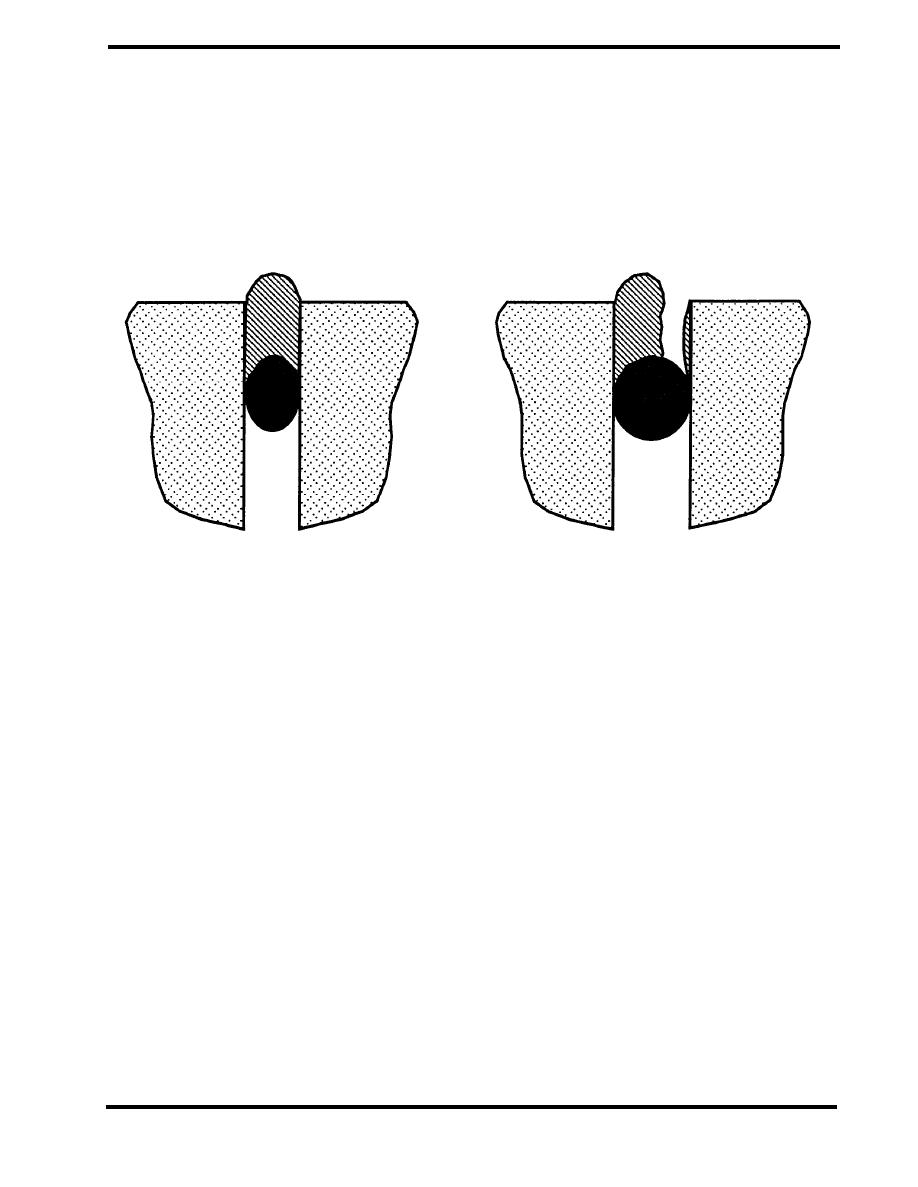
DESIGN/SEALANTS
Other sealants remain bulged after compression and will not restretch, so-called compression set,
as shown in Figure 3.5.5. in this situation, the joint sealant will fail cohesively when the joint
reopens.
UNACCEPTABLE
Joint under expansion
Joint under compression
Figure 3.5.5 Compression Set Sealant (Warseck)
Backup Materials
The selection and sizing of backup materials, often a backer rod, is another crucial aspect of
sealant joint design. General discussions of sealant backup materials are presented by Balliet and
Panek in ASTM STP 606 and by Schroeder and Hovis in ASTM STP 1069. The purpose of a
sealant backup is to limit the depth of the sealant bead, to enable the proper shaping to the sealant
by providing support to tool against, and to act as a bondbreaker to prevent back-side adhesion of
the sealant. In order to provide adequate performance, backup materials must not absorb water,
must not offgas and cause bubbling within the sealant, must remain flexible at low temperatures,
and must be compatible with the sealant material. Because it may be many months between the
installation of the backup and the sealant application, the backup material must be able to perform
as a temporary seal during this period of time. Closed-cell backer rods are a common backup
material, though offgassing can be a problem with the slow-curing sealants in use today. If the
backer rod is punctured or somehow damaged during installation, the gas emitted from these
ruptured cells can be pumped into the uncured sealant by thermally-induced cycling of the backup.
Gas bubbles in the sealant can degrade the cohesiveness of the sealant and lead to performance
problems. New developments of backup materials that do not offgas when ruptured are described
by Schroeder and Hovis in ASTM STP 1069. In addition to proper backup material selection, the
sizing of the backer rod relative to the joint width is important. The backer rod should be sized such
that it is held in place by compression in its final position and remains in place through the
dimensional changes in the joint width. Warseck recommends that the backer rod be sized about
30% greater than the maximum expected joint opening.
PAGE 3.5-9



 Previous Page
Previous Page
